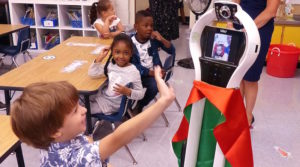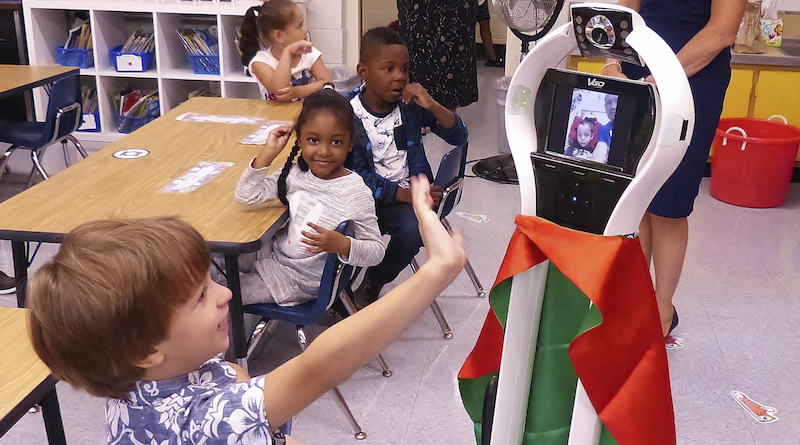Q&A: Managing a Telepresence Robot in the Classroom
The VGo telepresence robot changes the way schools serve students on leave by giving those who can’t physically get to school a telepresence in the classroom. The robot literally takes the student’s place in the classroom with a video screen that displays the student’s face and wheels that allow the robot to move throughout the space. Using WiFi, the robot is 100 percent remote controlled and offers high-quality audio and video — all of which the student can access remotely from a laptop or iPad.
School Construction News spoke to Phil Sheridan, director of Technology Services for the Delaware-Chenango-Madison-Otsego Board of Cooperative Educational Services, a regional educational agency that serves 16 schools in New York State, about the VGo robot and its use in the classroom.
Q: In what education situations or settings is the VGo used most?
Sheridan: We have eight VGo telepresence robots available in a borrow-and-share model within the 16 schools across four counties in central New York for which we provide technology services. Primarily, the VGo robot comes into play when a student is out for a medical issue. This could be something such as recovery from surgery or issues related to autism and anxiety.

The robot is available to all K-12 students, but has most often been employed for middle- and high-school students, as they would generally have a harder time keeping pace with learning if they were absent from school for a longer period of time. In general, we have seen the VGo robots being used for shorter time periods of around two weeks, but students have also used them for six-month periods in some cases.
Q: What are the key benefits of the VGo robot from an educational standpoint?
Sheridan: In a word: it’s immersive. The student maintains complete control of the VGo robot so it’s like they are right there in the classroom. Unlike static monitors and other telepresence tools, the robot allows a more natural interaction in the classroom. Students feel free to speak up if they don’t understand a concept and therefore become a part of the classroom discussion more readily. They can engage with classmates and teachers alike. This is especially a benefit for longer-term absences in which, without this benefit, students could easily fall behind in grasping a concept and even face repeating a grade.
Q: What is the future of the VGo robot and how do you see it helping change the educational landscape?
Sheridan: A large part of my job is to introduce emerging technology to schools that may help to positively impact the educational process. We also help educators to use these new technologies by guiding them in the training and implementation process, so they are comfortable and successful with devices such as the VGo robot.
While we don’t want to see more students absent for medical reasons, we are glad to have the tools to allow the student to feel as if they are there when they cannot be. We want the VGo robot to be a technology that both students and faculty feel comfortable using if the need arises. Offering the VGo robot enables schools to be more competitive and opens the door for more experiences for the students they teach.
For more information on high-tech learning tools, read this Q&A about 3-D printing or the high-tech learning tool feature in the November/December issue of School Construction News.

